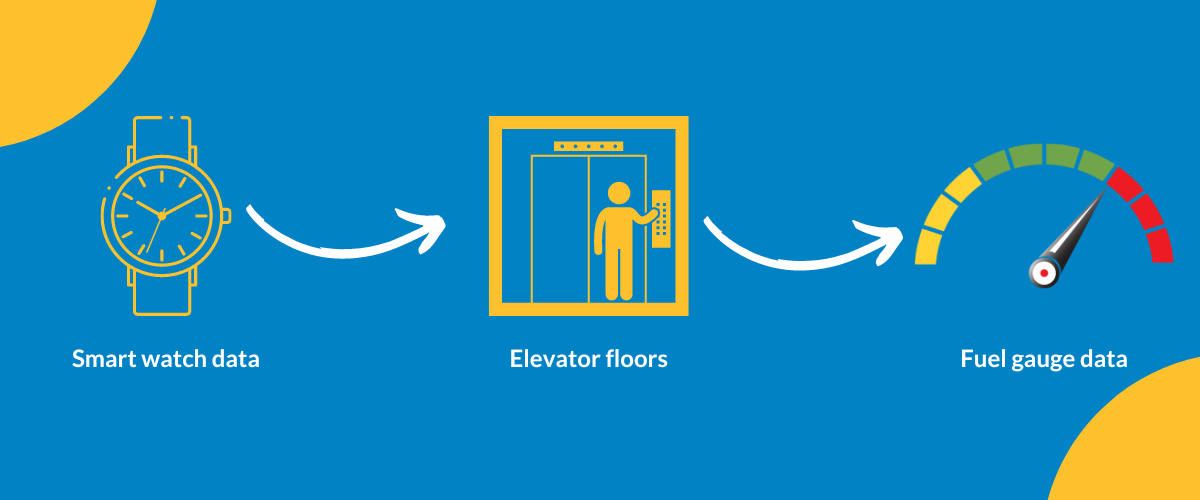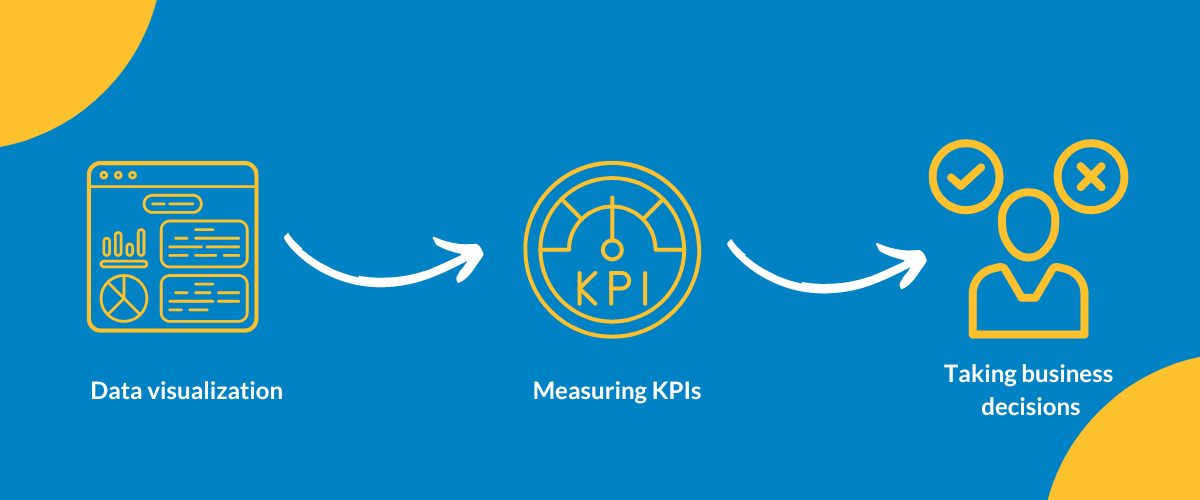In the dynamic business realm where decisions can make or break an empire, it’s crucial to delve beyond the surface and uncover the hidden gems of data-driven insights. Welcome to this month’s edition of our newsletter, where we embark on a captivating journey into the world of analytics and business intelligence (BI).
Now, hold onto your seats because we’re about to shatter the misconception that BI projects are all about flashy dashboards and eye-catching visualizations. While visual components may dazzle the eye, they merely scratch the surface of what lies beneath.
The true heart and soul of any successful BI project lies in the power of analytics. It’s like wielding a magnifying glass, peering into the organization’s data to unravel patterns, trends, and invaluable nuggets of wisdom.
Brace yourselves for mind-blowing revelations, innovative techniques, and awe-inspiring success stories that will forever redefine your perception of BI projects. In this edition of ZtoA Pulse, I (Naresh Kumar, Lead Marketing Strategist, Zuci Systems) am in conversation with Bala Loganathan (Technical Lead, BI, Zuci Systems) on the vitality of analytics over visually appealing dashboards.
Naresh: Throw some lights on dashboards in BI.
Bala: Let me start explaining dashboards with our day-to-day activities.
As we prepare for the day’s endeavors, we fasten a sleek and sophisticated smartwatch to our wrist, whereupon a captivating radial chart presents itself, displaying an elegant visualization of our daily health status.
Descending to the parking lot, our eyes are immediately drawn to the informative brilliance of the elevator display board, illuminating the floor number of the workplace.
Yet, as we step into our trusty vehicle, a momentary dismay settles upon us, for the fuel gauge reveals a less-than-ideal quantity of liquid energy within our mechanical companion. Finally, we feel fulfilled as we arrive at our respective destinations.

From the illuminated expanse of our phone screen, graciously disclosing both the number of messages and the time in legible font size, to the resplendent radial chart adorning our smart watch, eloquently conveying our daily state of well-being, how much visual information have we encountered in this short span?
The pieces of visual information are consolidated as one view called dashboards, and they serve a purpose by providing valuable information and acting as a starting point for decision-making to enable our lives hassle-free.
Naresh: How data and visualization help overcome business challenges?
Bala: Right from automobile to healthcare, banking, and retail, data plays a vital role in day-to-day operations. Data can be of any format and stored in apps or other mechanical systems.
- Dashboards enable organizations to visualize a meaningful insight into their data.
- Dashboards help organizations track and measure performance against predefined goals and targets.
- By visualizing performance metrics, businesses can easily identify areas of improvement, set benchmarks, and track progress over time.

However, when an organization has an abundance of dashboards, and one feels overwhelmed with numbers and unsure of their significance, it can be challenging. Here’s where precisely data analytics comes into play.
Naresh: Share one of your experiences where you combined both data visualization and analytics to provide a tailored solution
Bala: In today’s business landscape, effectively managing financial operations across departments is crucial for success. For a company with more than 1000 employees, we implemented a daily reporting system that captures the income and expenditure of each department. To provide top-level stakeholders with comprehensive financial insights, we leveraged the power of dynamic dashboards.
Developing a dashboard with key performance indicators (KPIs) became our starting point, allowing us to monitor the company’s finances on a day-to-day basis. As long as the dashboard displayed a skyward-pointing green arrow, we knew the business was on the right track.
However, when sales started declining over time, it was clear that we needed to go beyond the surface-level metrics. This prompted us to engage BI experts focused on thoroughly understanding the problem at hand.
We recognized that dashboards served as a reference point for analyzing the situation. They became our starting point to dig deeper into the data and identify the factors driving the decline. Once we uncovered the underlying issue, my team shifted their efforts towards creating a tailored solution to address the challenge effectively.
In summary, our journey goes beyond relying solely on dashboards. We understand the importance of tailored business solutions, where dashboards act as the starting point for analysis, uncovering insights that guide us toward crafting effective strategies specific to the organization’s unique challenges and goals.
Let me present another use case here:
During seasonal shifts, industries such as beverages and travel face the task of establishing sales targets. In this scenario, combining a tailored approach with data visualization is necessary to arrive at a solution rather than relying solely on existing dashboards.
Here, the BI analyst must consider the following factors:
- Promotion effectiveness in the market: Assessing whether promotional activities contribute to incremental sales for the product (with the help of data).
- Frequency of marketing campaigns: Determining how often marketing campaigns are executed for the product/service.
- Price elasticity: Evaluating how changes in price impact the demand for the product in the market and whether price adjustments have positive or adverse effects.
- Distribution: Analyzing the product’s market availability and gauging how quickly it sells out from store shelves.
- Product line extension (ideas): Assessing whether existing products meet market needs or if introducing a new product would help bridge any gaps.
- Competitor intelligence: Understanding competitors’ market positioning and identifying their offerings.
By examining these factors, the BI analyst can gain deeper insights, and businesses can make informed decisions about setting fair and reliable sales targets for their products. This analysis goes beyond the capabilities of a dashboard, offering more comprehensive insight to organizations through data extraction from multiple sources.
Naresh: Should businesses analyze beyond dashboards? What’s the role of analytics in decision-making?
Bala: Every enterprise operates under a distinct business paradigm, carefully crafted to align with the market’s dimensions and consumers’ demands. Moreover, it conscientiously factors in the perils inherent in the market landscape.
When circumstances falter, it indicates that either our performance falters or our competitors excel. To comprehend this facet of business more comprehensively, a meticulous triangulation of various hypotheses is indispensable.
In my experience, dashboards cannot furnish such profound insights. Instead, they necessitate the presence of erudite business intellect, harmoniously amalgamated with technical understanding, to deftly navigate this intricate task. When dashboards puzzle you, a strategic and customized approach backed by data analysis can help resolve business problems.
“Dashboards have certain limitations. They primarily provide insights into current and historical market trends, relying heavily on past data for any predictive capabilities. However, they fail to consider the day-to-day market dynamics that can have a significant impact, either positive or negative, on a product or business.
Moreover, dashboards are typically designed based on standard business rules, and any changes to these rules require the dashboard to be reconfigured to reflect the updated rules accurately. To overcome these limitations, a tailored approach that offers a comprehensive view of how to address a business problem is essential.”
For example, in 2011, McKinsey unveiled an interactive dashboard titled “Urban World: Mapping the Economic Power,” highlighting 600 burgeoning cities globally, serving as catalysts for the world economy. This dashboard is currently available as a downloadable PDF report. However, back then, I was employed by a market research firm, and as part of a team of junior analysts, was assigned to scrutinize a retail business’ preparedness to capitalize on these expanding markets. Here, we as a team suggested analyzing the current distribution of the organization’s products in each of the burgeoning city stores, and formulated a predictive analysis on improving the distribution with respect to the TAM (Total Addressable Market). In this context, the solution necessitated customization to cater to the unique requirements of the retail enterprise.
So, a business can be compared to an individual, as not all individuals communicate or behave in the same manner. Similarly, a business challenge can be compared to an ailment afflicting a person. Just as a single medication (a dashboard) does not universally cure all individuals, different treatments and care are required to address the diverse needs of each individual.
Naresh: How far are the various business intelligence tools in the market useful for implementing business solutions? Also, please cover when considering recruiting someone for your team, what primary skillset would you prioritize?
Bala: The key to achieving a successful business intelligence (BI) solution begins with extracting high-quality data from multiple sources, implementing robust data governance mechanisms, developing compelling storylines, and creating effective wireframes.
While expert BI analysts are vital in tailoring solutions and generating data-driven insights, tools are catalysts for creating intuitive visualizations and dashboards. However, although tools are essential, they contribute only 30–40% of the overall success of BI projects. The primary focus should be on the ability to derive and segment quality data from diverse sources whilst ensuring the absence of duplications.
That said, when encountering a defined business problem and a hypothesis, the initial step is to analyze the data residing within the system. This process can be compared to visiting a library and selecting the appropriate book to read. To accomplish this, one must possess knowledge of the library’s infrastructure and locate the correct shelf.
Similarly, business intelligence tools help simplify the extraction of valid insights from data, providing access to users of varying expertise. Even traditional tools such as spreadsheets are valuable for data analysis and the succinct presentation of ideas.
I consider the following factors while selecting the right business intelligence tools to implement a tailored analytics solution:
- Data management capabilities
- Data analysis pace
- Cost-effectiveness
- ELT capabilities
- Data security capabilities
The advent of business intelligence tools has revolutionized the field of data analytics, enabling organizations to work with data effortlessly. Visualization tools like PowerPoint, Tableau, and Power BI have been predominantly helping BI experts to simplify the process of conveying insights effectively.
Well, when it comes to the skills that I look for, in a BI Analyst, a few to quote are:
- Business acumen.
- Strong eye for detail (very important when someone is working with numbers).
- Story-telling skills.
- Verbal and non-verbal skills.
- Specialized in one of the query languages.
- Data wrangling specialization.
- Visualization specialization.
In conclusion, organizations shall perceive dashboards as a starting point for analysis, and then prioritize customized solutions to address any challenges in hand. This entails leveraging a skilled BI expert, utilizing appropriate BI tools and ensuring access to accurate and relevant data sources.
Read More:
Originally featured in our LinkedIn Newsletter, ZtoA Pulse.
Want to connect with our experts? Leave your details and we will get back to you.

